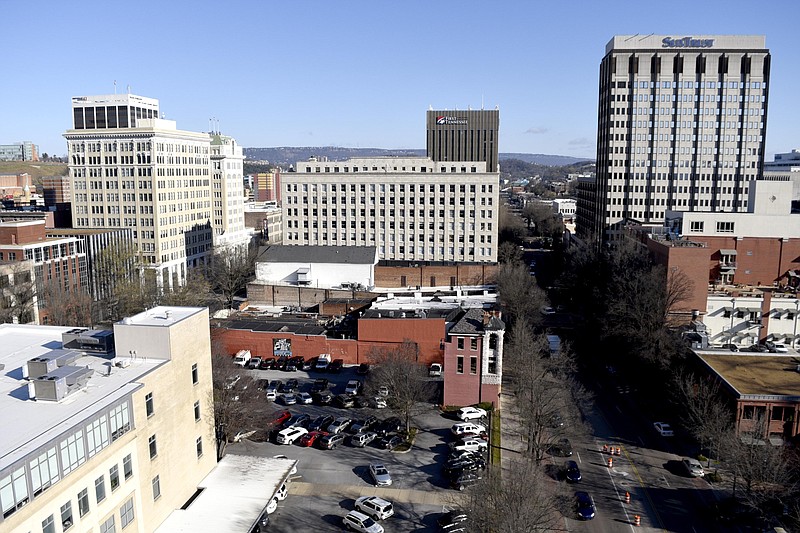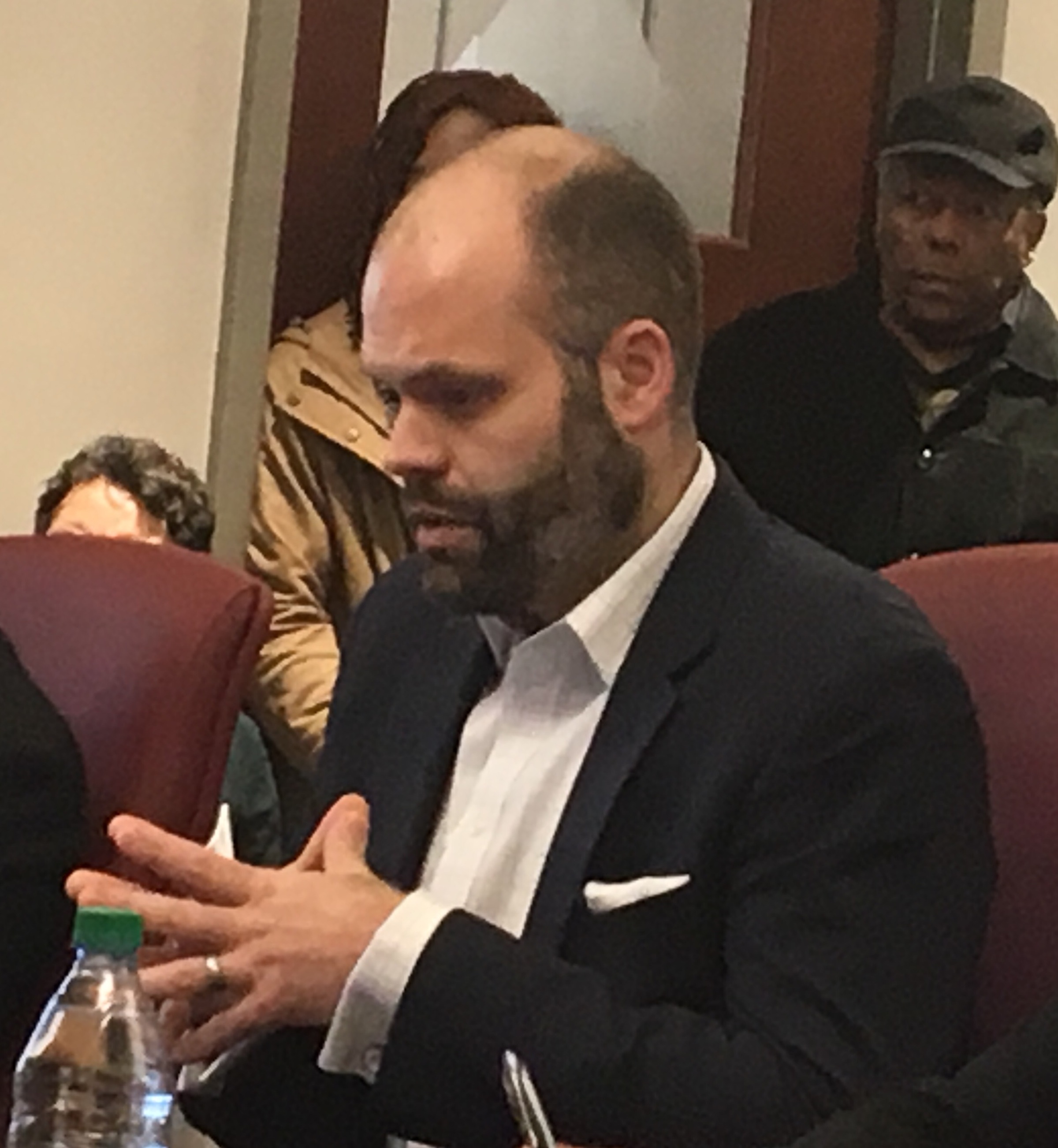Your chances of success in Chattanooga and Hamilton County is significantly different based upon the color of your skin.
For all the success in recruiting three of the biggest business investments in Tennessee over the past decade, Chattanooga's job growth is slowing while major racial disparities remain in Chattanoogans' incomes, according to data compiled for a new economic vision being shaped by a coalition of business, civic and government groups.
Job growth in Hamilton County trailed other comparable mid-sized cities over the past five years and even grew more slowly that the rest of Tennessee and the U.S. as a whole, consultants told the Chattanooga City Council on Tuesday. And while the economic recovery is approaching its longest sustained period in modern history, the racial gap in household earnings in Hamilton County remains 30 percent greater than in the country as a whole, with the typical white household in Chattanooga earning twice as much as the average black household.
"One of the big stories we see is the need for further growth," said Tony DeLisi, a vice president of Avalanche Consulting, an Austin, Texas-based company that has been studying the economy of Hamilton County over the past year for a new long-range visioning process known as Velocity 2040. "Chattanooga was tremendously successful coming out of the 1980s, creating lots of jobs. But in recent years, Chattanooga and Hamilton County are growing jobs more slowly than the nation, state and all benchmark communities. We need to accelerate growth in good jobs."
Southeast Tennessee landed Volkswagen's U.S. assembly plant, a major Wacker solar panel plant and two major Amazon distribution facilities from 2008-2010, bringing nearly $5 billion of new business investment and more than 10,000 direct and indirect jobs to the region. Those investments helped Chattanooga weather the Great Recession better than most communities, but the city still added jobs at a 20 percent slower pace than the state as a whole from 2012-2017. Chattanooga is growing at only a fraction of the torrid pace of comparably sized markets such as Provo, Utah; Boise, Idaho; and Charleston, South Carolina, according to government job figures.
DeLisi said Chattanooga not only will need to grow more businesses and talent to keep pace with other communities, new job opportunities will be needed just to make up for many jobs that will be displaced by automation, artificial intelligence and changing markets.
Hamilton County has more than 50,000 jobs - or 29 percent of today's workforce - in occupations that researchers at Oxford University project will not be "in demand" by 2030. Many of Chattanooga's biggest jobs such as truck drivers, clerks, warehouse handlers and factory workers are judged to have a 67 percent chance or higher of not being in demand in the next decade or so.
Chattanooga job growth lags
Despite record high employment and near-record-low jobless rates in the Chattanooga area, employment growth in the six-county Chattanooga area lagged other high-growth mid-sized markets as well as the state and national averages.2012-2017 metro job growth:Provo, Utah: 29.7 percentBoise, Idaho: 17.5 percentCharleston, South Carolina: 14.5 percentHuntsville, Alabama: 10.3 percentKnoxville: 8.3 percentChattanooga: 8.2 percentTennessee: 10.5 percentU.S. average: 9.2 percentSource: Avalanche Consulting/EMSI
"That doesn't mean that all of these jobs are going to go away right away, and it doesn't mean that they won't be replaced by other jobs that are perhaps higher paying," DeLisi said. "But many of the new jobs are going to be higher skilled or have new requirements and are going to require greater and new types of education."
That skills gap between what workers can now do and what jobs will require also creates a continuing challenge to narrowing the gaps in income among Chattanoogans, which are especially wide between the races. In 2017, the median income of white households in Hamilton County, $56,000, was nearly 37 percent greater than the $41,000 median income for Hispanic households and was twice the $28,000 median income for black households.
Nationwide in 2017, the U.S. Census Bureau said, the median income for white households was $68,145, or 69 percent more than the $40,258 median income for black households.
"Your chances of success in Chattanooga and Hamilton County [are] significantly different based upon the color of your skin," DeLisi said. "It's a very real factor that we see here and it plays out in household income, in education levels and in criminal statistics. There is a lot of history to this, but there is a very clear need for ongoing dialogues around this issue, particularly looking at an economic development strategy that tries to address these issues of equity and disparities. Not only is it the right and moral thing to do, but there are significant economic challenges in a community when you see these disparities."
Chattanooga City Councilman Anthony Byrd said many see the community as "two Chattanoogas" with many black or low-income citizens shut out of the process.
Racial income disparities
The median income of white Chattanoogans in 2017 was nearly double that of black Chattanoogans.Median household income by race in Hamilton CountyWhite: $56,000Hispanic: $41,000Black: $28,000Source: Avalanche Consulting; U.S. Bureau of Census for 2017
The Velocity 2040 initiative is seeking to be more inclusive than previous economic development strategies and is building on Chattanooga's visioning tradition by bringing together business, civic, government, faith and philanthropic groups and foundations to assess the community's needs and develop strategies for the future. As part of the effort, more than 4,000 Hamilton County residents - roughly approximating many of the key racial, geographic and age demographics of the area - filled out surveys with their views on the future of Hamilton County.
"This is going to used in a big way as part of the Chamber of Commerce's economic and talent development program of work over the next five years," Charles Wood, vice president of economic development for the Chattanooga Area Chamber of Commerce, told city council members. "We have gotten lots of good community input so far and we want your input as well as many others as we move forward."
DeLisi said Chattanooga's growth can come from recruiting businesses to town, growing existing businesses and starting new business ventures. Chattanooga, which bills itself as "Gig City," boasts the fastest citywide internet speeds in the nation on EPB's fiber-optic network and that, combined with the state's biggest business incubator and a host of accelerator and venture funds, has helped expand its entrepreneurial culture.
But DeLisi said Chattanooga's rate of new patents and business startups still trails most university towns and other growing mid-sized markets.
To move forward, those working on Velocity 2040 are focusing on preparing workers for the new economy, helping ensure that there are jobs for all and every resident is thriving and that the Gig City wins with entrepreneurs leading the way, he said.
"This is an ongoing effort to be inclusive and to make sure we have the voices of those who are not usually at the table," DeLisi said.
Contact staff writer Dave Flessner at dflessner@timesfreepress.com or 423-757-6340.
Jobs at risk
By 2030, 50,405 jobs now in Hamilton County will have a 67 percent chance or higher of not being “in demand.” Among the biggest occupations that are vulnerable are:Motor vehicle operators and truck drivers: 10,677Office and administrative support jobs: 6,694Material moving workers: 6,055Financial clerks: 4,832General production workers: 4,086Metal workers and plastic workers: 3,707Source: Avalanche Consulting, Pearson, Nesta & Oxford University

